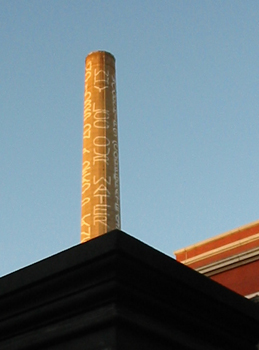Sequence viewing > Aesthetics Index - Resource - ©
Lloyd Godman
Overlapping
Form - Perspective
Overlapping
- when objects partially overlap other objects, we perceive them as closer
than the covered objects. Overlapping "overrules" the other
indicators of depth - we know that the smaller pyramids are closer because
they overlap the larger pyramids. Overlapping most clearly establishes proximity.

In pre-Renaissance perspective there were no overlapping shapes. All people
and objects were placed on the same horizontal base line, important figures
on the bottom row. People or things of lesser importance were drawn towards
the top and made smaller. The narrative or story was often arranged in
bands from the bottom to the top, so that people reading the narrative
read across and then up. This type of composition creates a flat space.
The Egyptian wall paintings, a good example of early flat art, show the
figures drawn from a side view but with the eyes looking forward, not
sideways. You may want to encourage the students to use this horizontal
band drawing to tell a story. Then when you introduce Renaissance perspective
they can compare the two.
Overlapping
shapes create a sense of space and depth in a drawing. By placing one
form behind another, the artist translates the space of three dimensions
to the flat two-dimensional space of the paper. We strengthen the illusion
of objects going back in space by placing them one behind another up the
page.

To
represent the objects moving back in space, they are drawn from the bottom
of the paper to the top. The base of each object is placed behind another
and further up the page. The front of the table is the space at the bottom
of the drawing page and the back of the table is the space closer to the
top of the page.
You
can demonstrate this paper-to-table relationship with a china marker and
a piece of clear Plexiglas. Hold the Plexiglas in front of a still life
and keeping your head in one place, draw the objects as you see them through
the Plexiglas. Draw the location of the top and the bottom of each form
as accurately as possible.
To
draw, students should be arranged around a table with a still life set
up. Each student should be able to see six to eight objects, placed from
the front of the table to the back. Easy-to-draw objects would include
eggplants, oranges, grapefruits, vases, bottles, cookie jars, onions,
and items without handles or spouts. If you want to include handles, first
do the exercise at the end of the cylinder lesson.
|